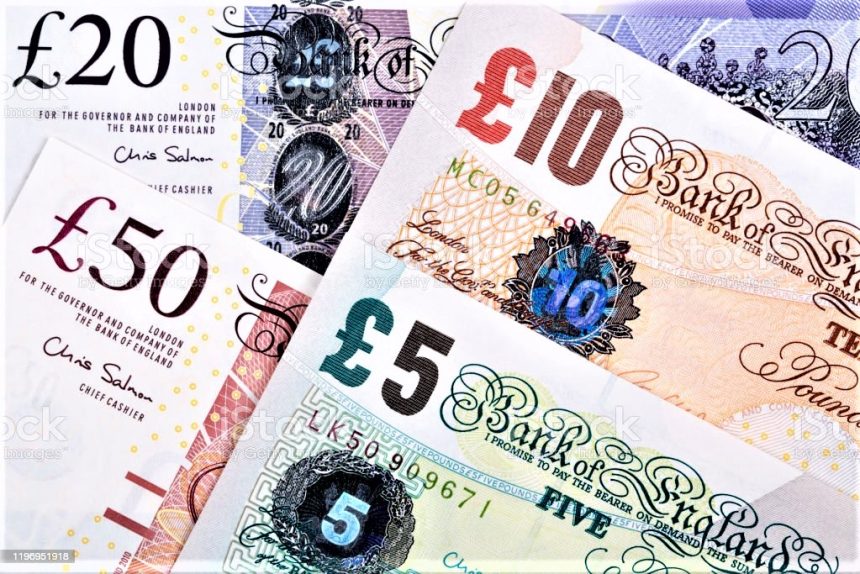The Pound Sterling (GBP) advanced against major peers on Thursday after the UK’s flash PMI data for August signaled stronger economic momentum. The Composite PMI climbed to 53.0, beating expectations of 51.6 and July’s 51.5, marking the fastest pace of growth in 12 months.
The services sector drove the gains, with Services PMI jumping to 53.6 from 51.8, reflecting resilient consumer demand and business activity. However, the Manufacturing PMI disappointed, dropping to 47.3 versus expectations of 48.3, highlighting deeper contraction in the industrial sector.
Chris Williamson, Chief Economist at S&P Global Market Intelligence, noted that the UK economy “has continued to accelerate over the summer after a sluggish spring,” with services providing the backbone of growth.
BoE Policy Outlook: Rate Cuts on Hold
The upbeat data, combined with sticky inflation, suggests that the Bank of England (BoE) may refrain from additional rate cuts in 2025. The latest ONS report showed UK CPI at 3.8% year-on-year in July the highest in nearly 18 months.
Earlier this month, the BoE delivered a 25-basis-point cut, bringing rates to 4%, but emphasized a “gradual and careful” approach to easing. Persistent price pressures could push policymakers to maintain current rates through the rest of the year.
Pound Edges Toward 1.3450
The GBPUSD pair climbed toward 1.3450 in Thursday’s session as traders priced in stronger UK economic resilience. The Pound also gained ground against the Yen and Euro, emerging as the strongest currency in the day’s heat map.
Meanwhile, the US Dollar Index (DXY) held steady near 98.45, with traders cautious ahead of Federal Reserve Chair Jerome Powell’s speech at the Jackson Hole Symposium. Market sentiment currently reflects an 81.6% probability of a 25-basis-point cut in September, but analysts warn of a possible hawkish tilt that could strengthen the Greenback.
Political Noise Adds Uncertainty
Adding to the market backdrop, US political tensions flared as former President Donald Trump renewed calls for Fed Governor Lisa Cook’s resignation over mortgage-related allegations. Cook dismissed the claims, reiterating her intention to remain in her role, signaling the Fed’s commitment to independence.
UK PMI Data Signals Economic Resilience
The Pound Sterling (GBP) found support on Thursday after the UK S&P Global Services PMI came in better than expected at 52.4 for August, compared to July’s 51.3. This indicates that the services sector the backbone of the UK economy remains in expansion territory.
The upbeat data helped GBPUSD bounce above 1.2730, despite ongoing global risk aversion and a steady US Dollar. Analysts note that while the UK economy faces headwinds from sticky inflation and sluggish growth in some sectors, the services strength provides a cushion against a deeper slowdown.
Markets Brace for Powell’s Policy Outlook at Jackson Hole
Attention now turns to Federal Reserve Chair Jerome Powell’s much-anticipated speech at the Jackson Hole symposium on Friday. Markets are pricing in an 80% probability of a 25-basis-point rate cut in September, but Powell’s tone will be critical in shaping expectations for future monetary policy.
A dovish message could trigger fresh weakness in the Dollar, giving GBPUSD more room to climb. Conversely, a hawkish or cautious tone may keep the Dollar supported, limiting Sterling’s near-term upside.
Key Data to Watch
Market participants now await the US S&P Global PMI report for August, due later today. Stronger-than-expected US data could limit GBPUSD gains, while softer prints may support Sterling’s upward momentum toward the 1.3500 level.
Conclusion
The Pound rally reflects renewed confidence in the UK economy, driven by robust services activity and sticky inflation that could keep the BoE on hold for longer. However, the pair’s next big move hinges on Powell’s Jackson Hole speech and US PMI data. A dovish Fed stance could propel GBPUSD higher, while a hawkish tone may cap Pound advance near key resistance levels.









